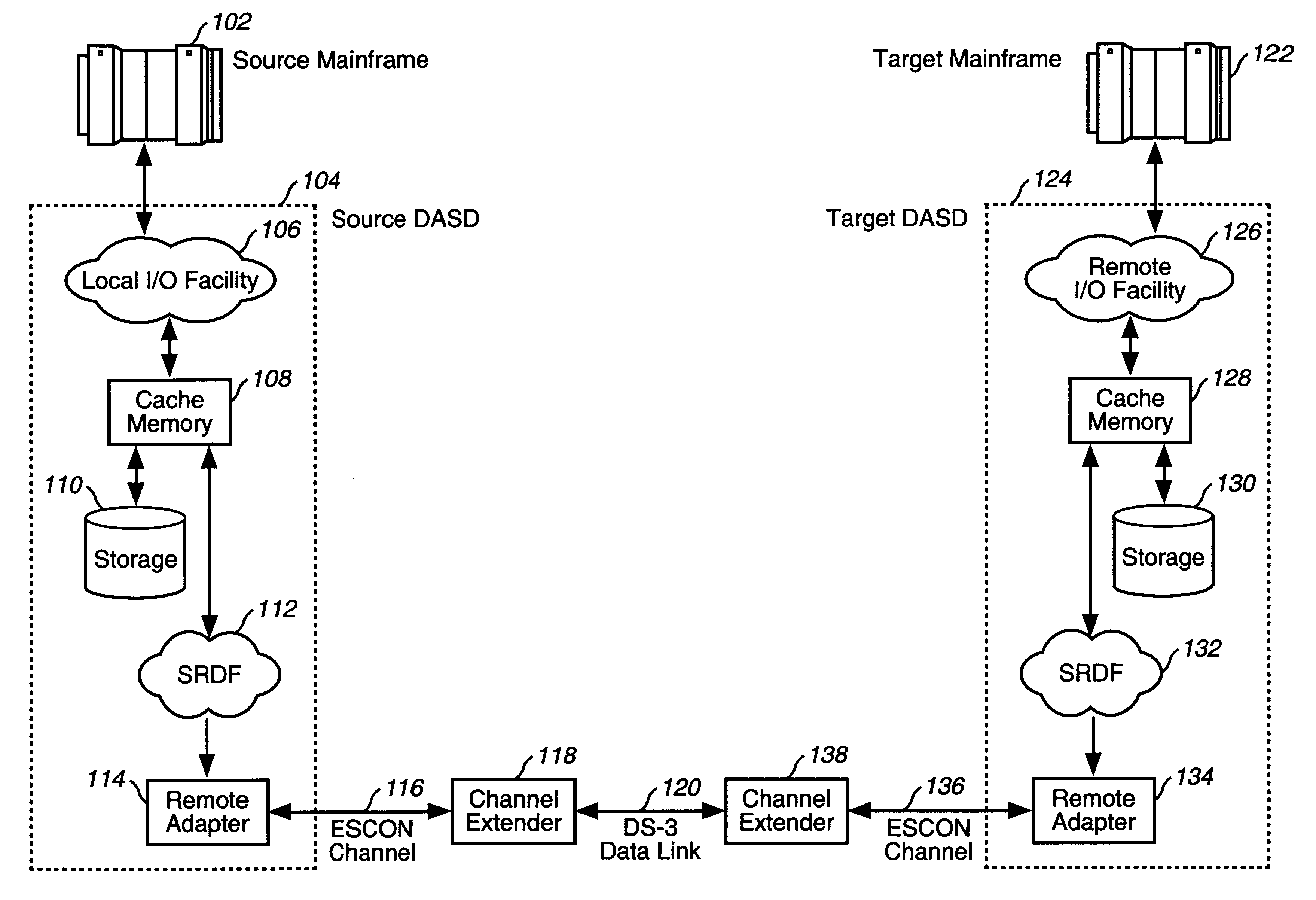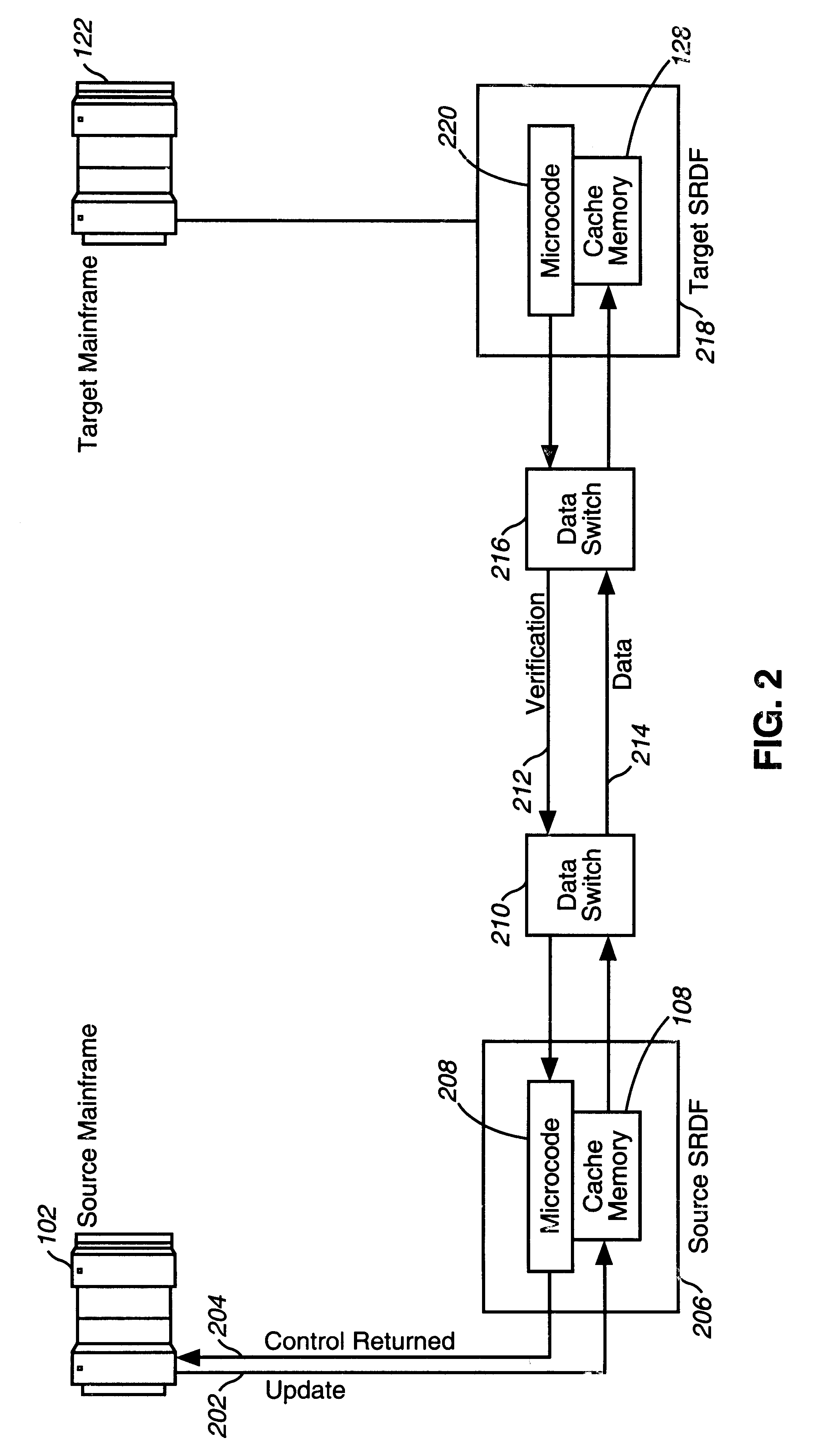Data center migration method and system using data mirroring
- Summary
- Abstract
- Description
- Claims
- Application Information
AI Technical Summary
Benefits of technology
Problems solved by technology
Method used
Image
Examples
Embodiment Construction
1. SRDF Platform
The present invention solves the problems of migrating volumes of data from a source DASD in a primary data center to a remote, target DASD in a remote data center by using EMC's SRDF units to generate mirrored copies of the data.
FIG. 1 illustrates the system architecture of a data center migration platform using EMC SRDF units. This platform is a standard configuration for using the SRDF for the mirroring of data. A Source Mainframe 102 and Source DASD 104 represent the primary data center to be migrated, whereas a Target Mainframe 122 and Target DASD 124 represent the remote data center which is to received the migrated data. Both the Source DASD 104 and Target DASD 124 include an EMC SRDF unit 112, 132 in the preferred embodiment. The EMC SRDF unit it described in detail in the SYMMETRIX Remote Data Facility (SRDF) Product Guide, P / N 200.999-554 Rev. B, EMC Corporation, June 1995, 1st Edition, which is incorporated by reference in its entirety. The reference to EM...
PUM
 Login to View More
Login to View More Abstract
Description
Claims
Application Information
 Login to View More
Login to View More - R&D
- Intellectual Property
- Life Sciences
- Materials
- Tech Scout
- Unparalleled Data Quality
- Higher Quality Content
- 60% Fewer Hallucinations
Browse by: Latest US Patents, China's latest patents, Technical Efficacy Thesaurus, Application Domain, Technology Topic, Popular Technical Reports.
© 2025 PatSnap. All rights reserved.Legal|Privacy policy|Modern Slavery Act Transparency Statement|Sitemap|About US| Contact US: help@patsnap.com



